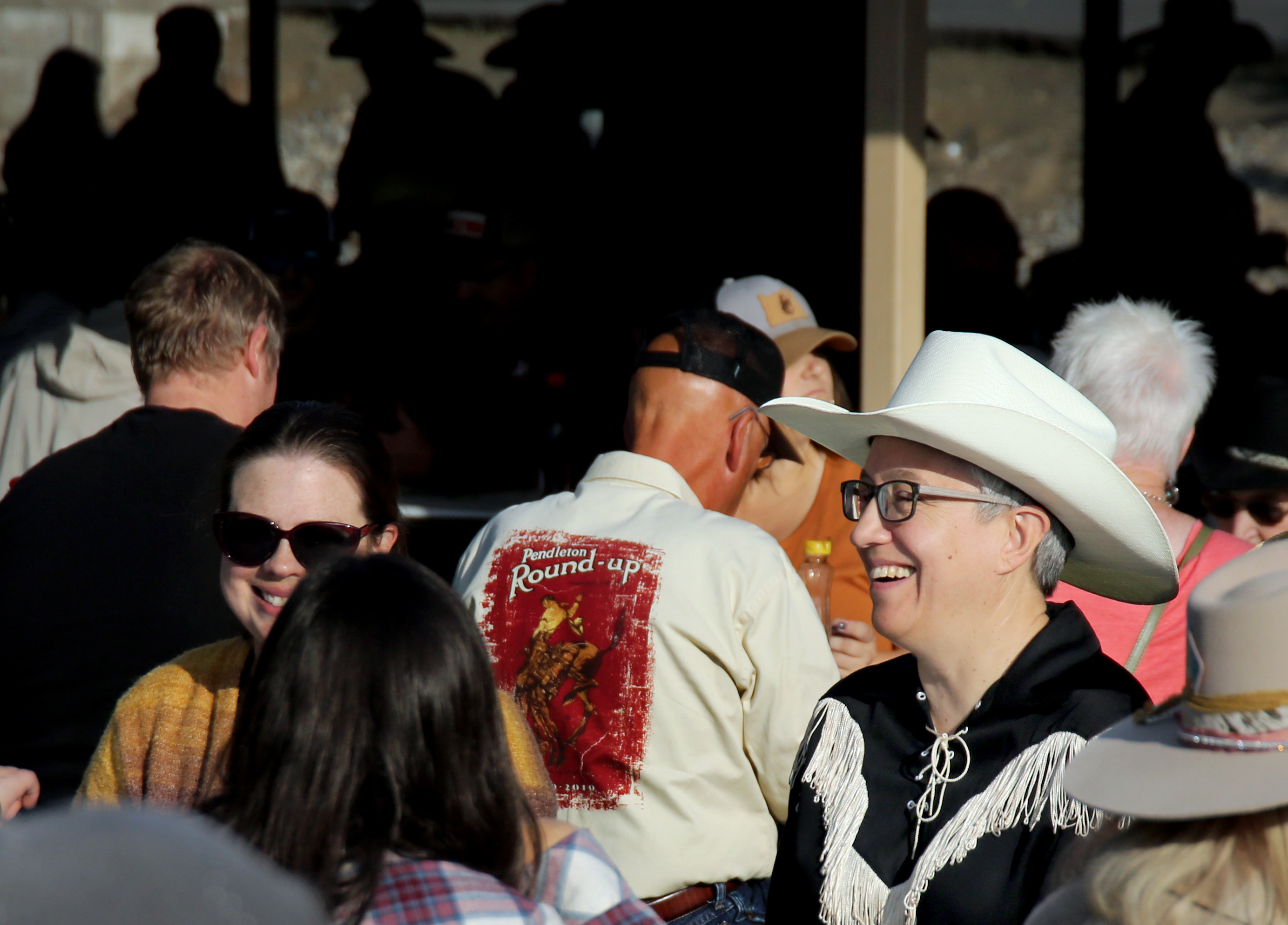
FILE: Democratic gubernatorial candidate Tina Kotek chats with voters at the Pancake Breakfast, a tradition at the Pendleton Round-Up, on Sept. 16, 2022.
Joni Land / OPB
Tina Kotek will spend her first year as governor traveling to places that gave her the least support in November.
At a Dec. 12 Oregon Business Council event, the governor-elect announced that she was launching the One Oregon tour across the state.
“I am committed to visiting every county in Oregon in my first year in office, with an eye toward building strong, working partnerships across our state — especially when it comes to housing, mental health and addiction care and education,” she told her audience in Portland.
Kotek kicked off the tour by visiting Yamhill County and stuck with her themes, making stops at the Virginia Garcia Memorial Health Center and Head Start of Yamhill County before holding a roundtable with local government and nonprofit officials to discuss housing and homelessness.
Kotek plans to repeat this process 35 more times across the state once she takes office Jan. 9. Although the former state House speaker had a sometimes contentious relationship with conservatives, her team believes these issues are unifying.
“These issues are the focus of the tour because they are issues of shared concern across Oregon, and they will be the areas that she will focus on first as Governor,” Lindsey O’Brien, a spokesperson for the transition team, wrote in an email.
One of the participants in Kotek’s Yamhill County stop was state Rep. Ron Noble, a Republican from McMinnville who joined her for a roundtable discussion on housing and homelessness.
Noble said it was important for Kotek to show up in person and talk to people on the ground, especially when it came to issues like mental health.
“My perception is we are generations behind on providing those supports,” he said.
Noble said he appreciated that Kotek took time to shop in McMinnville outside of her scheduled tour. Once governor, Noble hoped Kotek and legislators would pass laws that understand what works in cities might not work best for rural communities.
“We want everybody to kind of think alike and be alike,” he said. “Both sides are pushing to convince the other side. And they’re missing the idea that sometimes civil discourse means that you don’t agree, but you come to a resolution — and overall hopefully a better resolution than if one person or one group of people make all the decisions.”
Kotek started her tour in a county that she lost. Republican Christine Drazan took more than half the vote, the rest mostly split between Kotek and third-place finisher Betsy Johnson, a non-affiliated candidate.
But when she hits the road again in January to visit Douglas County, she will find herself in much more politically inhospitable territory: Kotek took home just 22% of Douglas County’s vote in November.
Republicans have long been able to rely on rural Oregon to support their candidates by lopsided margins, and Democrats saw their support crater in November with Kotek on the ballot. While Kotek’s vote total may have been depressed by Johnson, a former Democrat, Drazan pushed her vote share higher in several rural counties.
That trend held true in Malheur County, where Drazan won with 75% of the vote, a significant jump from the 67% the Republican candidate won in 2018.
Although Malheur County is much closer to Boise, Idaho, than it is to Kotek’s home in Portland, Malheur County Judge Dan Joyce said he met her previously when she toured the area in 2016.
Joyce, who presides over the equivalent of a board of commissioners, said Kotek would do well to continue keeping track of the state’s investments in Malheur County.
He said the Legislature used to allow for more local control and input, noting that some Eastern Oregon residents were attracted to the Greater Idaho movement because of state laws unpopular with rural Oregonians.
“If we were to get back to something like that then some of those issues would die,” he said.
Despite Malheur County’s conservative bent, Joyce said the county would work with the governor when they could.
“You have no choice,” he said. “It doesn’t do any good to go butt heads because that’s never worked.”
Kotek will get her first shot at turning some of these discussions into action during her first legislative session as governor, which starts Jan. 17.